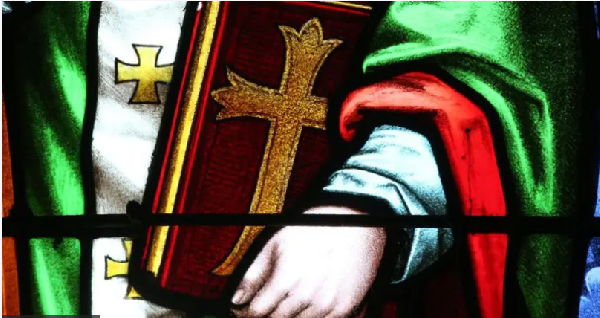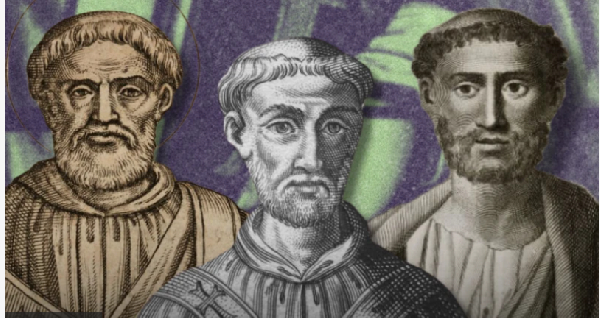Di death of Pope Francis don lead to speculation say di next leader of di Catholic Church go be from Africa.
But di Church bin don get Africans for di top bifor.
Historians believe say e bin get three popes wit connections to di continent, di most recent wey bin reign over 1,500 years ago.
Dey all dey believed to be of North African descent. Di Roman Empire bin stretch across modern-day Tunisia, di north-east of Algeria and di coast of western Libya.
Bifor di establishment of Islam in di seventh century, Christianity bin get strong presence in di region.
Prof Christopher Bellitto, from Kean University in di US, tell BBC say: “North Africa na di Bible Belt of ancient Christianity.”
While little dey known about di personal lives and backgrounds of di last three African popes, historians agree say all bin play significant role in di early history of di Catholic Church.
In fact, all three popes don dey recognised in di Church as saints.
Victor I (AD189-199)
Dem tink say e be of Berber origin, Pope Victor I bin dey in charge of di Catholic Church for time of regular persecution of Christians sake of dem no gree to accept and worship Roman gods.
E bin perhaps dey best known say e make sure say Christians celebrate Easter on a Sunday.
In di second century, some Christian groups from di Roman province of Asia (in modern-day Turkey) bin celebrate Easter on di same day wey di Jews bin dey celebrate Passover, wey fit fall on different days of di week.
However, Christians in di Western part of di Empire believe say Jesus dey resurrected on a Sunday, so Easter suppose always dey celebrated on dat day.
Di debate over wen di resurrection bin happun make am real issue of argument.
Di ‘Easter controversy’ dey symbolic of larger conflicts between East and West wey dey worry wit whether or not Christians suppose follow Jewish practices.
Victor I bin call di very first Roman Synod – one gathering of Church leaders – to resolve di mata.
E bin do dis wit threat to excommunicate from di Church those bishops wey refuse to comply wit im wishes.
“E bin rather be forceful voice for getting everyone on di same page,” Prof Bellitto tok.
Dis be one impressive feat, Bellitto tok, sake of say, “e be di Bishop of Rome wen Christianity bin dey illegal in di Roman empire.”
Anoda important part of Victor I legacy na to introduce Latin as di common language of di Catholic Church. Before, Ancient Greek na di primary language of di Catholic Liturgy as well as official communication for di Church.
Victor I imself bin write in – and speak – Latin, wey dey widely spoken in North Africa.
Miltiades (AD311-314)
Pope Miltiades dey believed to dey been born in Africa.
During im reign, Christianity bin gain increasing acceptance from successive Roman emperors, e eventually become di Empire official religion.
Bifor dis, di persecution of Christians don dey widespread at different points in di Empire history.
However, Prof Bellitto bin point out say Militiades no dey responsible for dis change, say di Pope be di “recipient of di Roman benevolence” rather dan being a great negotiator.
Di Roman Emperor Constantine bin give Miltiades palace, e become di first pope to get official residence.
E also dey granted permission by Constantine to build di Lateran Basilica, now di oldest public church in Rome.
While modern popes live and work for di Vatican, di Lateran church sometimes dey referred to in Catholicism as “di mother of all churches”.
Gelasius I (AD492-496)
Gelasius I na di only one of di three African popes wey historians believe say dem no born for Africa.
“Reference to am say e be . . . Roman-born. So we no know if e [ever] live for North Africa, but e dey clear say e be of North African descent,” Prof Bellitto explain.
E be di most important of di three African church leaders, according to Prof Bellitto.
Gelasius I dey widely recognised as di first pope to officially dey called di “Vicar of Christ”, term wey signify Pope role as Christ representative on Earth.
E bin also develop di Doctrine of di Two Swords, wey bin emphasise di separate-but-equal powers of di Church and di state.
Gelasius I bin make di critical distinction wey both powers give to di Church by God, wey den delegate earthly power to di state, wey make di Church ultimately superior.
“Later on, in di Middle Ages, Popes sometimes bin try to veto di selection of emperor or a king, sake of say dem tok say God give dem dat power,” Prof Bellitto tok.
Gelasius I dey remembered, too, for im response to di Acacian Schism – one split between di Eastern and Western Christian Churches from 484 to 519.
During dis period, Gelasius I bin establish di supremacy of Rome and di papacy over di entire Church, East and West, wey experts believe say bin go further dan any of im predecessors.
Gelasius also dey responsible for one popular celebration wey dem still dey mark every year, establish St Valentine’s Day on 14 February in 496 to commemorate di Christian martyr St Valentine.
Some accounts say Valentine be priest wey bin kontinu to perform weddings in secret wen dem dey banned by Emperor Claudius II.
Historians believe say Valentine’s Day dey rooted in di Roman love and fertility festival, Lupercalia, and na move by Gelasius I to Christianise pagan traditions.
Wetin di Africa popes look like?
Prof Bellitto say no way to know wit any degree of accuracy wetin di three popes look like.
“We need to remember say di Roman Empire, and indeed di Middle Ages, no tink of race as we tink of am nowadays. E get notin to do wit skin colour,” e bin tell BBC
“Pipo for di Roman Empire no deal wit race, dem bin dealt wit ethnicity,” e tok.
Prof Philomena Mwaura na Associate Professor of Religious Studies for Kenyatta University in Nairobi. She stress say Roman Africa dey very multicultural, wit local Berber and Punic groups, freed slaves and pipo wey bin don come from Rome dey found there.
“Di North African community dey quite mixed, and na trade route also for many pipo wey bin dey involved in trade in dia earlier antiquity,” she bin explain to BBC.
Rather dan to identify wit some ethnic groups, she say, “most pipo wey belong to areas within di Roman Empire bin regard themselves as Roman.”
Why African pope never dey since?
Afta Gelasius I, no oda Pope dey believed to be from di Roman province of Africa.
“Di church for North Africa dey weakened by very many forces, including di fall of di Roman Empire and also di invasion of Muslims [into North Africa] for di 7th century,” Prof Mwaura tok.
However, some experts say di fact say Islam dey front for di region, no explain di absence of African Pope over di past two millennia.
Prof Bellitto say di process to elect new pontiff become “Italian monopoly” over di years.
However, e say di likelihood of a Pope from Asia or Africa in di next decades dey high sake of say Catholics for di southern hemisphere outnumber those for di north.
In fact, Catholicism dey expand more rapidly in sub-Saharan Africa today dan anywhere else.
Di latest figures show say e get 281 million Catholics for Africa in 2023. Dis account for 20% of di worldwide congregation.
But Prof Mwaura argue say “although Christianity dey very strong in Africa, di power of di Church still dey di north, wia di resources bin don dey.”
“Maybe, as e dey kontinu to dey very strong within di continent and dey support itself, den one time go come wen African pope go dey,” Prof Mwaura tok.

Afta Gelasius I, no oda popes dey believed to be from di Roman province of Africa
